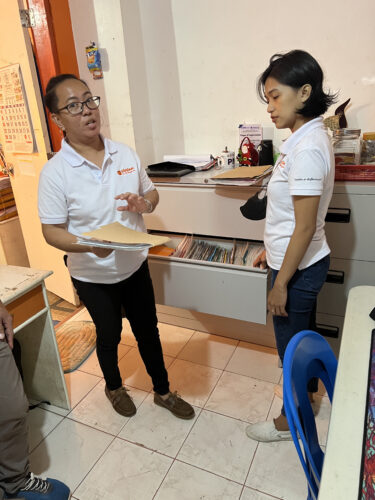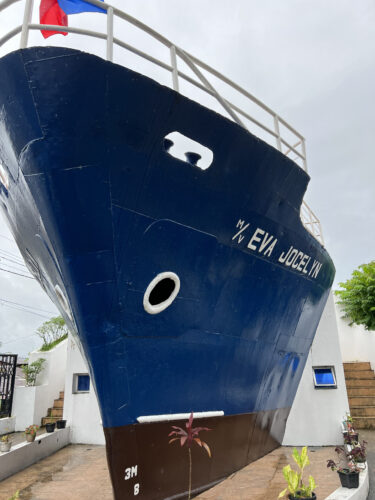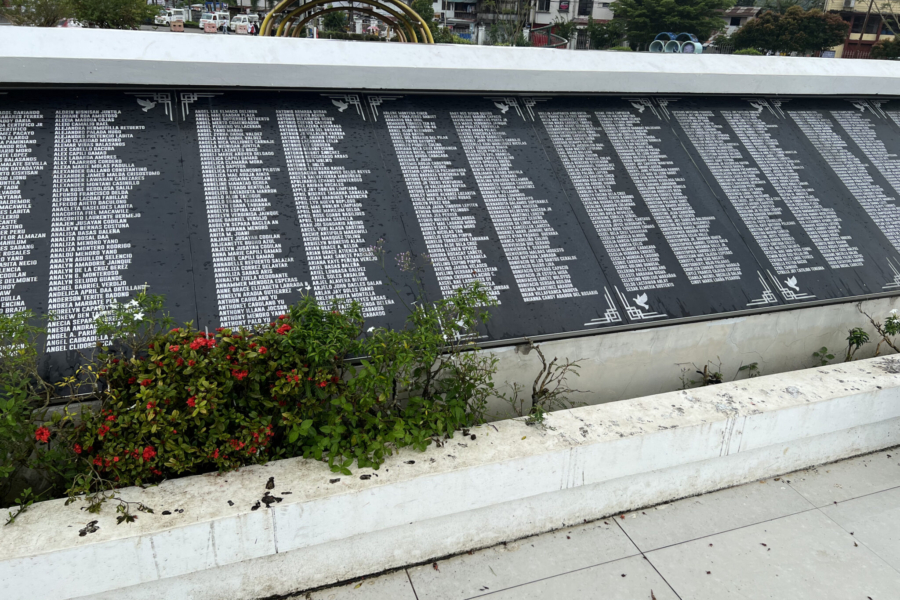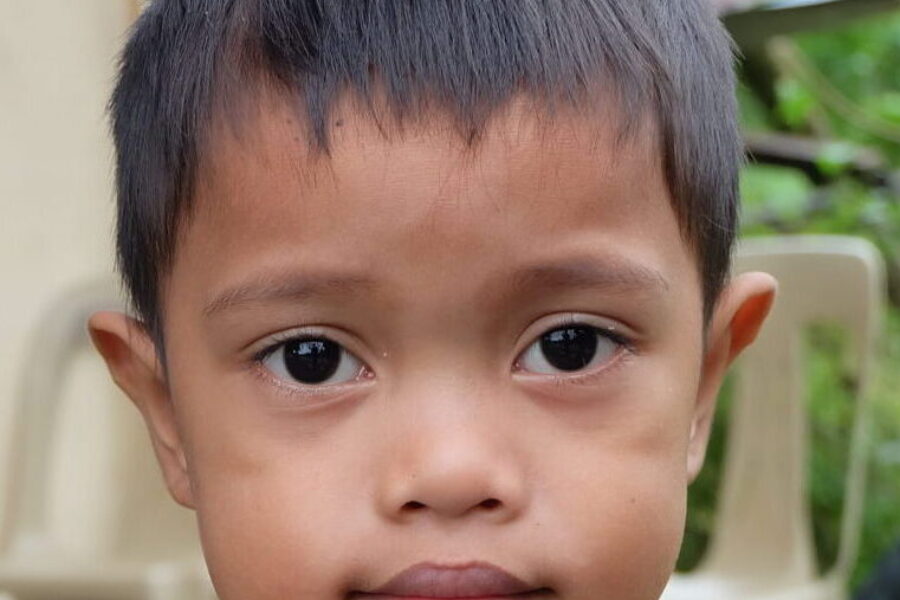Our volunteer coordinator, WimWim, picked me up early the morning after I arrived in Tacloban to take me to the Volunteer for the Visayans main office, located a short distance from the downtown area in a neighborhood called Bliss.
Before I knew it, we made one last turn and arrived at the VFV office, which faced a large basketball court and playground for the children in the community, surrounded by two story, modest concrete block homes.
When we arrived, we parked along the cobblestone road, right next to a few small shops selling candy, snacks and household items. Across the street was a large entry way with Volunteer for the Visayans written across it, where a few of the locals stood chatting, smiling and waving to WimWim as we made our way past them to enter the neighborhood.
Although the VFV sign was posted on the main entrance of Bliss, the office isn’t located close to the road. As we walked narrow sidewalks with small homes on each side, turning left and right and left again, I realized I would easily get lost here if I weren’t following WimWim, as the walkways started to look the same and my sense of direction dissipated.
But, before I knew it, we made one last turn and arrived at the VFV office, which faced a large basketball court and playground for the children in the community, surrounded by two story, modest concrete block homes.
I followed WimWim inside the building, and we made our way up to the second floor where she had prepared a presentation for me about the work of VFV in Tacloban to explain how she and other VFV employees were implementing our sponsorship program, which provides for more than 150 children living in poverty all around the city and countryside.
ABOUT VFV
VFV has a long history in Tacloban, going back to the 1990s, when, according to their website, “U.S. volunteers from Jacksonville University, Florida, led by Troy Peden, traveled to the Philippines in order to volunteer on a project known as Building Hope, which was the original precursor to Volunteer for the Visayans. The volunteers participated in a number of community development and social welfare projects, including the renovation and repair of Sagkahan National High School which had been damaged by a recent typhoon.”
VFV runs a very successful volunteer program in which nearly 200 volunteers from all over the world come to the center each year, live with host families, and help support the center’s efforts in the community.
“During their visits, Peden and his volunteers set foundations for the future by working closely with the Tacloban City Social Welfare and Development Office, building trust and creating a model which would serve as VFV’s underlying structure for years to come.”
“The volunteers continued to return on their own each year, and in 2004 were instrumental in establishing Volunteer for the Visayans as a non-profit organization. With support from the GoAbroad Foundation, Troy Peden provided a gateway of financial support which slowly enabled VFV to develop the resources needed to become a successful on-ground NGO. With every year that passed, VFV strived to reach out and improve the lives of communities and individuals in a manner that was responsible and sustainable; this led to a number of projects developing under VFV’s core programs.”
Volunteers from around the world

WimWim (left) is pictured with another VFV staff member. They are showing me how they keep the records of each sponsored child organized in the VFV office.
As I watched the slide show that WimWim had created to explain the work of VFV, I found myself enthralled with the organization and just how much they were doing for children and families — in large part thanks to our donors. In addition to supporting children with basic needs, they also implemented weekly feeding programs, offered tutoring sessions and computer classes for students, arranged medical care support, and helped students apply for higher education upon graduation.
Furthermore, VFV runs a very successful volunteer program in which nearly 200 volunteers from all over the world come to the center each year, live with host families, and help support the center’s efforts in the community. As WimWim explained, the volunteers are responsible for all the shopping for the supplies for the children, all the food preparation and clean up for the feeding programs, and help tutor and play games with the kids as well.
After hearing about this amazing organization, and all the work they were doing in Tacloban, I couldn’t wait to spend the next four days visiting the three affiliated sites we support in conjunction with VFV – the Visayans Community Center at Bliss, the Santo Nino Center, and the Cancumbang Center. And now that I had heard more about how they operated, I could see why VFV is able to support so many children in need.
***
How do I sponsor a child in the Philippines?
You can sponsor a child in the Philippines in one of three ways: call our office at 1-800-538-5381 and speak with one of our staff members; email us at sponsorship@children-inc.org; or go online to our sponsorship portal, create an account, and search for a child in the Philippines that is available for sponsorship.






